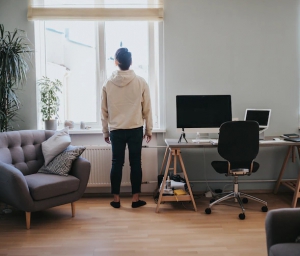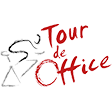Everyone seems to be discussing work-life balance, how it’s so important and how they want to achieve it. It can feel like an impossible balance to find, especially if your workplace isn’t as flexible as you want them to be (like 10 am starts and 4-day weekends). But it’s important to find that balance for both your mental and physical health to avoid burnout. There are many benefits to gaining and maintaining a work-life balance including reducing stress, increasing productivity and reducing sick days. But if those don’t convince your boss to help you create balance in your life then there are 7 tips below to help you achieve work-life balance on your own.
1. Prioritize
‘Work smarter, not harder’. I know you’ve heard it before but it’s true – except maybe we can change ‘harder’ to ‘longer’. Don’t come in before the clock starts and leave after it’s stopped, instead start prioritizing your work. Start with things that need to be done, make a list of the most important to the least important tasks. Most importantly though, make it realistic. If you’re not sure how long a task takes, time yourself doing it so you know for next time. Leave a small amount of time between tasks knowing you’ll be answering emails or speaking to co-workers.
This can also be done for your personal life, write down your household chores, errands you need to make and once you have (a realistic) list of things to do, finish the list with things you want to do. Sometimes it can be hard fitting in things you want to do, you don’t think you have the time, you put them off. But treat them like the important task on your list, prioritize them and do them.
2. Set Boundaries
This can be hard due to our availability to have 24-hour contact no matter where we are. But this should not mean you have to constantly be on-call. Don’t answer emails, calls or text from the office before or after work hours. Set your boundaries further though, say ‘no’ to work or even family events that you don’t wish to attend, especially if you’ve already put aside that time to yourself.
3. Exercise
It might not be on your personal life’s priority list but it should be. Excluding the fact that exercise is good for your physical well-being, physical exercise provides major benefits to a work-life balance. Exercise reduces stress and boosts productivity helping you ‘work smarter, not longer’.
If exercise is not your thing or you’re feeling strapped for time, consider exercising through your work lunch break. If you’re used to taking an hour off for lunch but tend to eat within 10 minutes and sit on your phone for the rest of the hour switch it up and exercise instead. Go for a walk or run for 30 minutes, take an office buddy with you so you can slip in your lunchtime chit chat while you exercise. Working through your lunch break means when you’re finished work, if you want to go home, kick your feet up and watch a movie, you can!
4. Eliminate Time Wasters
This is a second reminder to prioritize what you want to do. If you still think you don’t have time to read that book, visit that museum or catch up with your friend take a look at your schedule. Chances are you do have time to fit in, maybe sometimes it’s a squeeze but if you really want to do it, do it. It might not feel like you have time though due to all the time-wasters around us – and they’re sneaky.
Think about all the times you open your phone up to complete one task but then suddenly it’s a fair while later and your browsing through social media. Or maybe you sat down on your couch for two seconds while the TV was on and you’ve fallen into a reality TV hole. Unless these activities are actually your favourite activities, stop! Log out or delete social media apps off your phone so it’s harder to access them. Don’t turn the TV on unless there is something specific you want to watch and then make sure to turn it off when you’re done.
By eliminating time-wasters in your life, you’ll find extra pockets of time in your life to fill with more productive and fun activities.
5. Re-learn to Relax
You might think you know how to relax, but do you? How often do you switch off completely and I’m not just talking about turning off your phone? For at least 20 minutes a day, you should take time for yourself, by yourself. This time should be spent away from people and technology – and the toilet doesn’t count. Take time to clear your thoughts, just lie down and stare at the ceiling or the sky. Meditation is a great way to disconnect from the world and connect with yourself. There are many apps that can walk you through a meditation session – so, I guess maybe you can use your phone. Taking the time to yourself will give you more clarity and increase your focus.
6. Sleep
You need to sleep. We all know this but so many people don’t take this seriously enough. If you’re not getting enough sleep, you’re going to struggle to create and maintain a work-life balance. If you struggle to get to bed when you need, set a bedtime and stick to it. Pencil this into your to-do list or put a reminder on your phone if you work well with a structured life. If you know you like to read a book before bed or take a while to get to sleep, schedule that in too. Once you’ve created a healthy sleeping pattern, you’ll find yourself a lot less tired and a lot more productive.
7. Start Small
Depending on how close you are to a work-life balance, it might be good to start small. Taking on all of these might be too much, it might ‘shock’ your system and discourage you from continuing. Slowly start to implement healthier habits into your work and personal life. As you achieve each small step you’re taking, it will make you feel good and encourage you to continue.

In extreme cases, isolation can be as bad for your health as smoking 15 cigarettes daily.
